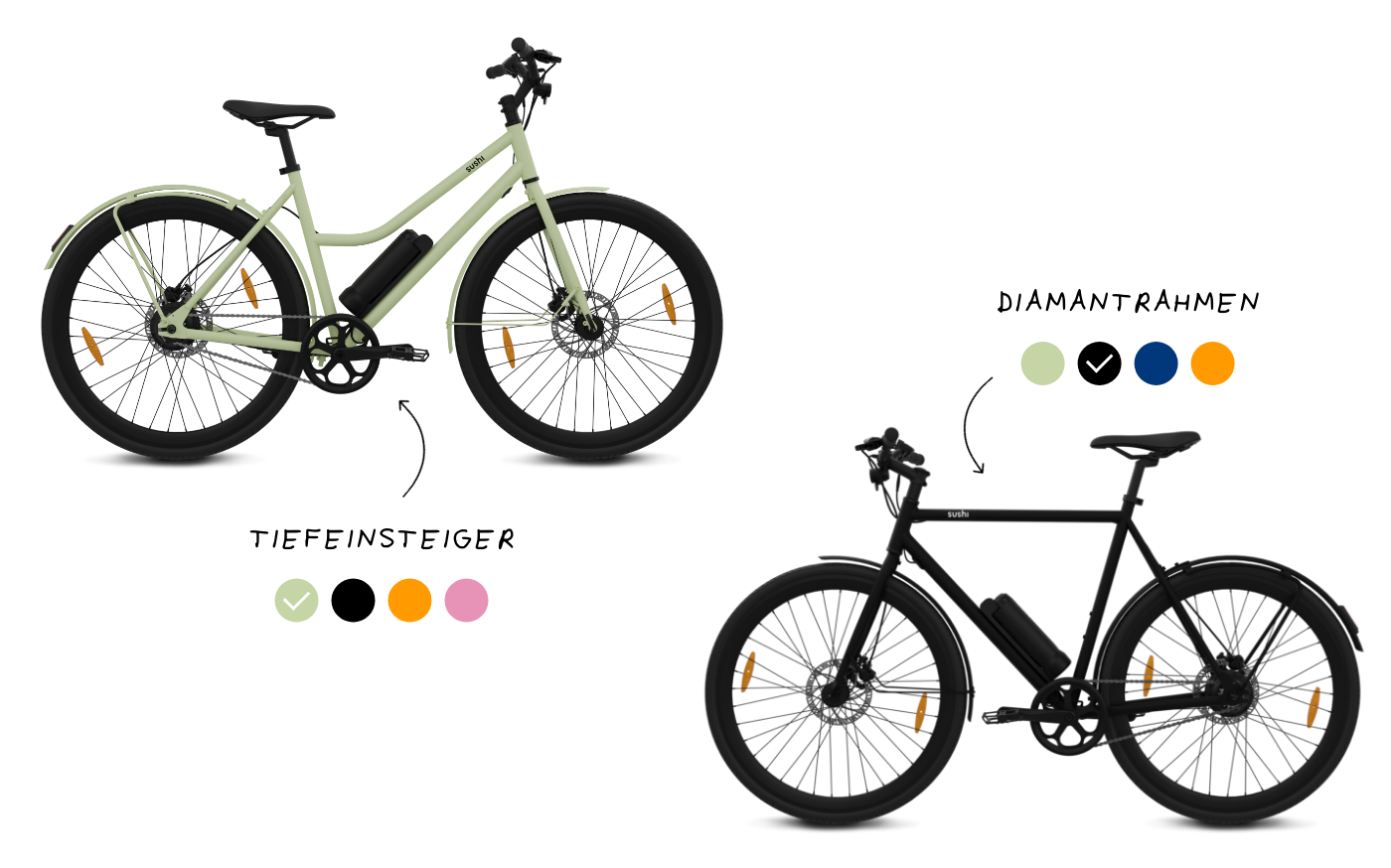E-bikes are the future of urban mobility - and we at SUSHI BIKES firmly believe that they have the potential to replace cars in the city. Distances covered by an e-bike are often longer and more regular than with traditional bicycles. In addition, the e-bike offers advantages that are particularly appreciated in cities: it reduces physical exertion, makes commuting more pleasant in all weather conditions and also enables people with health restrictions to be mobile on two wheels . All of these advantages would be unthinkable without batteries.
Scientific studies confirm that e-bikes have a higher potential for saving CO2 emissions compared to conventional bicycles when they replace cars. This makes them a real game changer for a more sustainable future.
Batteries and their CO2 footprint
The largest CO2 emissions from an e-bike are caused by the manufacture of the battery. But the longer you use your SUSHI BIKE, the better the carbon footprint becomes. Studies show that the production of a battery produces between 41 and 89 kg of CO2e per kWh of battery capacity. For our battery, that means 9 to 20 kg of CO2e. If you assume that a car emits around 14 kg of CO2e per 100 km, you can "offset" the battery emissions by riding around 200 km on your SUSHI BIKE - you can usually do that in a month!
The two biggest levers for improving the CO2 balance are:
- Use of renewable energies in production: More and more manufacturers are relying on green energy.
- Use of recycled materials: In the EU, batteries are increasingly being recycled and will soon have to be equipped with a “passport” that facilitates the recycling process.
We also contribute to this: Our batteries can be returned to recycling centers, bike shops or directly to us. Using the GRS recycling system, we ensure that they are properly recycled and reused.
Our contribution to greater sustainability
Our batteries are deliberately smaller - and therefore more environmentally friendly. After all, batteries account for between 16% and 24% of an e-bike's total emissions. The lower battery capacity of our SUSHI BIKE means we reduce the use of critical resources such as lithium and cobalt.
- Lithium: Mining is criticized due to environmental pollution.
- Cobalt: Despite progress, human rights challenges in artisanal mining remain.
That's why we are an active member of the Fair Cobalt Alliance - the only e-bike brand. With our commitment, we support fair working conditions and sustainable projects directly on site.
How to extend the life of your battery
The longer you use your battery, the more sustainable it becomes. Here are some tips:
- Battery level: Keep the battery between 20% and 80%.
- Temperatures: Avoid extreme heat or cold, especially during storage.
- Charging current: Use green electricity wherever possible to further improve the CO2 balance.
You can find more information about the correct use and storage of your SUSHI BIKE, especially in winter, here.



